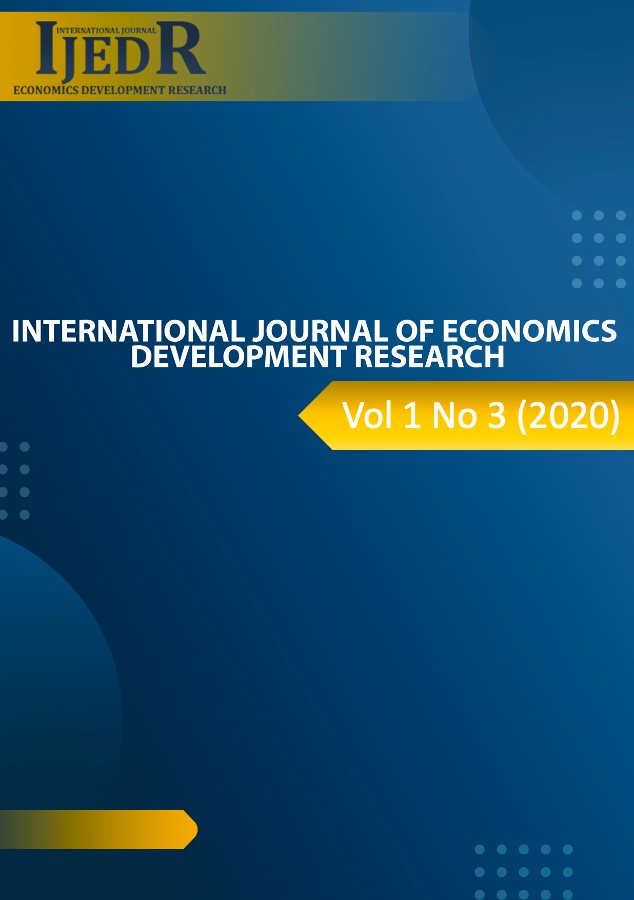TRANSFIGURATION OF NATIONAL HEALTH FINANCING TO RURAL COMMUNITIES
A Case of Pastoro-Nomadic Communities in Marsabit County, Kenya.
DOI:
https://doi.org/10.37385/ijedr.v1i3.158Keywords:
Health care financing, pastoral nomadism, universal health care,Abstract
Health financing is one of the important goals of any government. In Kenya, the government is exerting all effort to ensure its citizens’ health care needs are safeguarded through increased budgeting and putting in place requisite legislative measures. However, like any other developing nation, the dream of equity in accessing health care is not satisfactorily realized due to many challenges. For pastoralist/nomadic communities in the country, who are deemed marginalized in a considerable number of spheres relative to communities subscribing to other subsistence strategies, the solution is far from being hoped for. This research asks the question “how can national health financing be transfigured to suit the need of pastoral-nomadic communities?”. The research adopted descriptive research design to survey household in the four constituencies of Marsabit County. Respondents were selected using random sampling. Structured questionnaire and focused group discussion was used to gather data and using logistic regression. Many of them do not have a formal education and hence formal employment to enable them have consistent income to pay for their health cover forcing them depend on donors. It was recommended that education should be enhanced so as to upscale the enrolment to health insurance. Further, they should be encouraged to join to a welfare group so as to access finances for payment of insurance subscription. The government should diversify mode of payment and also mobilize resources that will be used to help the poor pay for their health financing need.
References
Acharya, A., & Ranson, M. (2005). Health Care Financing for the Poor. Economic and Political Weekly: 4141
Ataguba, J. E., Akazili, J., & McIntyre, D. (2011). Socioeconomic-Related Health Inequality in South Africa: Evidence from General Household Surveys. International journal for equity in health, 10(1): 1-10.
Commission on Revenue Allocation (2011), Government of Kenya.
Dong, S., Wen, L., Liu, S., Zhang, X., Lassoie, J., Yi, S., Li, Y. (2011). Vulnerability of Worldwide Pastoralism to Global Changes and Interdisciplinary Strategies for Sustainable Pastoralism. Ecology and Society, 16(2).
Dubale, D., & Mariam, H. (2007) Determinants of Conventional Health Service. Utilization Among Pastoralists in Northeast Ethiopia, The Ethiopian Journal of Health Development Vol. 21 (2): 42-147.
Government of Kenya (2010) Constitution of Kenya (2010). Government Printers,
Haile Selassie Avenue, Nairobi, Kenya.
Health Sector Working Group (2012). Medium Term Expenditure Framework (MTEF) for the period 2013/2014-2014/2015. Republic of Kenya.
Kamau, M. (2010). EU sets up digital village for pastoralists, Standard Digital.
Kansra, P., & Gill, H. S. (2017). Role of Perceptions in Health Insurance Buying Behaviour of Workers Employed in Informal Sector of India. Global Business Review, 18(1): 250–266.
Khalai, D., Banerjee, R., & Mude, A.G. (2016). Analyzing the Use of ICT In Demand and Access To Information and Services for Pastoralists. Paper presented at the Tropentag 2016 Conference on Solidarity in a Competing World—Fair Use of Resources, Vienna, Austria, 19–21 September 2016. Nairobi, Kenya: ILRI.
Kisa, A., &Younis, M. Z. (2006). Financing Health Care for the Poor in Turkey: Is a Temporary Solution Becoming a Permanent Scheme? Public Health Reports, 121(6): 764–768.
Kumar, A. S., Chen, L. C., Choudhury, M., Ganju, S., Mahajan, V., Sinha, A., & Sen, A. (2011). Financing Health Care for All: Challenges and Opportunities. The Lancet, 377(9766): 668-679.
McIntyre, D., Govender, V., Buregyeya, E., Chitama, D., Kataika, E., Kyomugisha, E., Kyomuhangi, R., Mbeeli, T., Mpofu, A., Nzenze, S., Walimbwa, A., & Chitah, B. (2008). Key Issues in Equitable Health Care Financing in East and Southern Africa,’ EQUINET Discussion Paper Series 66. Health Economics Unit, UCT and EQUINET: Harare.
Ministry of Health. (2014). Kenya Household Health Expenditure and Utilization Survey. Nairobi: Government of Kenya.
National Health Insurance Fund (2015). National Health Insurance Fund. Kenya.
Ngowi, E.E., & Mwakalobo, A. S. (2017). Rural-ICT Service Providers and Agro-Pastoralists Interface: Implications of The Processes for Sustainable Agro-Pastoral Livelihoods in Rural Tanzania. Livestock Research for Rural Development. Volume 29, Article No. 172. Retrieved February 7, 2018, from http://www.lrrd.org/lrrd29/9/ngwo29172.html
Olasehinde, N., & Olaniyan, O. (2017). Determinants of household health expenditure in Nigeria. International Journal of Social Economics, 44(12): 1694-1709.
Peters, D. H., Garg, A., Bloom, G., Walker, D. G., Brieger, W. R., & Hafizur Rahman, M. (2008). Poverty and access to health care in developing countries. Annals of the New York Academy of Sciences, 1136(1): 161-171.
Swartz, K. (2009). Health care for the poor: For whom, what care, and whose responsibility? Changing poverty, changing policies, 26(2): 69-74.
Taylor, R & Blair, S. (2003). Financing Health Care: Singapore’s Innovative Approach. Viewpoint.WorldBank, Washington, DC. World Bank. https://openknowledge.worldbank.org/handle/10986/11299
Zikusooka, C. M., Kyomuhang, R., Orem, J. N., &Tumwine, M. (2009). Is health care financing in Uganda equitable? African health sciences, 9(2): 552-558.





